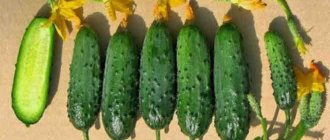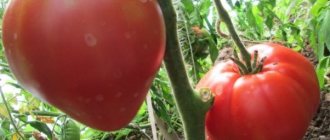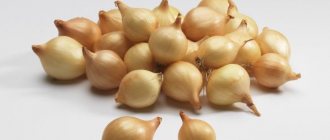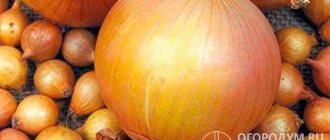- Description and characteristics of the eggplant variety Giselle
- Growing Eggplant
- Transplanting
- Video: obtaining eggplant seedlings
- Caring for eggplant plantings
- Reviews of eggplant Giselle
Eggplant variety Giselle: variety description, photos, reviews, cultivation features. Next to the representatives of the large nightshade family, the eggplant looked more like a stepchild against the background of favorites: potatoes and tomatoes. Even peppers felt more comfortable in our plots until eggplant hybrids appeared, grown in protected soil. One of these varieties is Giselle , an eggplant that delights summer residents from Bryansk to Yakutia
Description and characteristics of the variety
Eggplant Giselle F1 is a vigorous species with strong shoots. The height of the bush is 1.8–2 m. Plants need fixation and periodic pinching. The inflorescences have a purple tint and are shaped like potato buds.
Ripening occurs early: 110 days from germination (45 days after the appearance of the first flowers).
Typical properties of hybrid fruits:
- average weight - 300–400 g;
- diameter - 6.5–7.5 cm;
- length - 25–30 cm;
- shape - elongated;
- color - dark (from purple to black);
- seeds are small, there are not many of them;
- surface - with a glossy shine.
The hybrid is grown exclusively through seedlings. Seeds are sown in a nutrient substrate during February-March. The harvest is harvested from July to September inclusive.
Growing Eggplant
Giselle is not a variety in the usual sense, but a first-generation hybrid (the seed package has the designation F1).
This means that there is no point in trying to save a couple of successful torpedo fruits for seed. According to all the laws of genetics, the offspring obtained from a hybrid in the first generation will split the parental properties, that is, it is impossible to predict which eggplants will grow from these seeds.
It’s easier to trust the professionals, buy seeds, sow in insulated cups, get your own seedlings, plant them in a greenhouse or under film covers and wait for an early harvest of high-quality eggplants.
Transplanting
Seeds for seedlings are sown in mid-March. Before sowing, they can be soaked in some kind of growth stimulant. Recommended products: Epin , Zircon , Energen and others. The seeds are wrapped in gauze soaked in the solution.
Before planting, the seeds are soaked in a solution of a growth stimulator.
Landing
Eggplant Giselle F1 is sown from the third ten days of January (in the southern regions). In the temperate zone, seedling cultivation begins in February-March. In the North, seeds are sown from the second half of March. Bushes with 7–8 leaves are transplanted to a permanent place when the ground warms up to 14–16 degrees.
Farmers advise treating seed material with a stimulant. The duration of soaking the seeds in the solution is 5–7 hours. Suitable products: Epin, Agate, Bioglobin. When small seedlings appear, the seeds are planted in containers or containers of 250–300 ml. The soil mixture is ordered from an agricultural store or made up of turf, compost, or humus.
The seeds are sown 1.5 cm deep, the ground is moistened in advance with warm water. The surface is lightly compacted from above. Before emergence, the boxes are covered with film. To illuminate the seedlings, photo lamps and fluorescent lamps are connected.
At the 2-leaf stage, eggplants are fed with urea or nitroammophos (the proportion for dilution is 15–20 g per 10 l). The second feeding is carried out with a complex product: Kemira-lux or Gumi (proportion - 25-30 g of the drug is diluted in 10 liters of water).
In the phase of 8–9 leaves, the bushes are transplanted to stationary beds. Young plants are pre-hardened for two weeks. The optimal temperature when performing the procedure is 12–15 degrees.
The beds are dug up in the fall, and green manure crops (phacelia, oats, rye, lupine) are sown. In the spring, the area is dug up and the green mass is buried under a layer of soil. Add rotted compost (5–7 kg per 1 sq. m), superphosphate (40 g per 1 sq. m). Marigolds, calendula, greens, salad crops, and carrots are planted next to eggplants.
Plantings should not be thickened. For 1 sq. m plant 3-4 bushes. The spacing between plants is 35 cm in a row, 70 cm between rows.
Features of agricultural technology
As a rule, eggplants are distinguished by strong and powerful bushes with large leaves. They have a well-developed root system. The downside is that it is located on the surface of the ground and therefore there is a high probability of damage. The plant will take a long time to recover. Both male and female flowers are present. There is a predominant tendency to self-pollinate due to the heaviness of pollen.
It is important to know!
In the middle part of the country, the Moscow region, Siberia, and the Urals, it is recommended to grow eggplant crops only through seedlings.
Eggplants are planted in a permanent place of growth on the 55th – 60th day. This time is enough for seedlings to turn into strong seedlings. Often, when located in open ground, artificial greenhouses are built. This will protect plants that are difficult to care for from possible frosts and strong drops in temperature at the very beginning of the summer season.
AGROTECHNIQUES EGGPLANT - THIS IS IMPORTANT - video
When planting seedlings, it is worth using the transshipment method so as not to damage the sensitive roots.
The fruits should be collected at the stage of technical maturity, when the pulp is juicy and the seeds are almost ripe. When they reach biological maturity, eggplants become bitter due to the high concentration of solanine in them.
EGGPLANT!
Eggplant Black Beauty Eggplant Diamond
At the moment, breeders from different countries have developed new varieties and hybrids, thanks to which there are eggplants for the north-west, and even Siberia. They differ in terms of ripening, shape and color of the fruit.
The rating of the best varieties of eggplant according to reviews from gardeners from different regions is presented below.
Eggplant "Albatross"
A variety with medium ripening periods. The harvest is harvested 4 months after planting the seedlings in open ground. Eggplants have an elongated, pear-shaped shape and a dark purple color. The bush takes up enough space on the site, since its branches are spreading and a lot of ovaries are formed. Inside there is light green flesh. The weight of one fruit is about 350 grams. The main advantage of the Albatross eggplant variety is the absence of bitterness in taste and a constant yield level - 9 kg per 1 m2. "Albatross" is the best variety of eggplant for the Moscow region.
Photo of eggplant "Albatross"
Eggplant variety "Annet"
Dutch hybrid of early ripening eggplants. Ripe fruits are formed within 2 - 2.5 months after planting the plot. It has a long fruiting period until the very first frost. It is distinguished by its ability to quickly recover, so pests are not afraid.
In the southern part of the country, “Annet” is suitable for open ground, but for central Russia - only in greenhouse conditions. The fruits are cylindrical and deep purple in color. The peel is thin and smooth, glossy. Great appearance. The weight of Annette eggplant can range from 200 to 400 grams. The flesh inside is white and tasty. Requires frequent watering. Productivity – 4 kg per 1 m2.
Eggplant "Annette" - harvest photo
Eggplant "Baikal F1"
Ripens early, approximately on the 100th day after planting at a permanent place of growth. Tall bushes - up to 1.2 m in height. Eggplant “Baikal F1” is suitable for Belarus, Ukraine, Russia, Moldova. The shape of the fruit is elongated cylindrical, slightly curved. Classic eggplant color. Inside is tender green pulp with medium density. The weight of one copy is about 300 g. There are also larger ones. To get a good harvest, you need to water and feed on time. From 1 m2 you get up to 8 kg of ripe vegetables. Used in cooking in any form, including for preparing winter salads, snacks, and pickles.
Eggplant "Behemoth F1"
One of the best varieties of eggplant for greenhouses. Belongs to medium-term varieties. Ripens on the 105th day after planting the seedlings. Russian-made hybrid. It is represented by a bush with a height of 80 to 1.5 m in adulthood. In the form of a standard. There are practically no thorns on the plant. Ripe fruits are in the shape of a regular cylinder, up to 20 cm long. Color dark purple.
The weight of the Behemoth eggplant is from 300 to 350 g. Inside there is green, loose pulp. Store at home for no longer than 14 days. The aroma is weak. Immunity is at an average level, therefore it requires preventive treatments. Loves fertilizers. Resistant to high levels of humidity and temperature. The yield of this variety of eggplant, depending on the growing conditions, varies from 2.5 to 6.5 kg per 1 m2.
Eggplant variety “Behemoth F1” - photo
Eggplant "Bibo F1"
Received in the Netherlands in 2008.
"Bibo F1" is a representative of early eggplant varieties. The collection of the first fruits begins on the 90th – 95th day. Suitable for growing both in greenhouses and on ridges in open ground. This variety of eggplant is ideal for the southern region of the country and the middle zone. A low bush up to 85 cm in height with short internodes. This already indicates a potentially high yield. Spreading is average.
The fruits have an elongated oval shape and are white. Surface without pronounced gloss. Weight up to 250 g. Length is about 18 cm. Sepals are covered with sharp spines. Up to 15 fruits are produced on one plant. Adapts well to changing environmental conditions. The yield of the Bibo eggplant variety is from 4.8 kg per 1 m2.
Photo of white Bibo eggplants
Eggplant “Big bumpkin F1”
The best variety of eggplant for Siberia. Ripens in medium terms, approximately 4 months after planting the seeds. Created specifically for harsh climates. The bush is low - up to 70 cm. But the weight of one fruit can vary significantly: from 700 to 1500 g. Cases have been recorded when the weight of this large-fruited eggplant variety even reached 2 kg! The color of the fruit is the usual purple, the flesh is white and surprisingly tender and tasty. From 1 m2 of “Bolshoi Uvalen” eggplant plantings, a harvest of 7 kg is harvested. It has excellent immunity to both diseases and viruses.
Eggplant variety “Giselle F1”
Russian hybrid. “Giselle” is an early-ripening variety of eggplant; it ripens quickly, already on the 110th day after germination. A tall adult bush can grow up to 2 meters in height. The foliage is at an average level. Thorns are present, in small quantities. The fruits have an elongated cylindrical shape. The length of one eggplant is up to 30 cm. The color is purple, with a noticeable gloss. The weight of one vegetable is from 300 to 400 grams. Inside there is almost white pulp. There is no bitterness.
The plant quickly gets used to the planting site. The fruits have a good presentation. Can be stored for 21–28 days. Resistant to temperature changes, Giselle eggplant is suitable for growing in Siberia, the Moscow region and other areas with harsh and changeable climates. The yield of this eggplant in open ground is up to 9 kg per 1 m2, and in a greenhouse it is slightly higher - 11.5 kg.
Eggplant "Giselle" - photo on a bush
Eggplant “Dwarf early 921”
The variety withstands the harshest conditions. “Dwarf early 921” is suitable for both the Leningrad region and Siberia; this variety of eggplant feels great in open ground. Fruiting begins approximately on the 120th day after the first shoots. The bush is compact, low - no higher than 45 cm. The branching is also weak, so it is good to grow it in a small area. The plant has no more than 5 branches. Easy to care for. It is enough just to quickly remove the wilted leaves to provide the required amount of light. The shape of the fruit is round. Weight – 300 gr. Productivity is up to 6 kg per 1 m2.
Eggplant variety "Clorinda F1"
Hybrid eggplant with early ripening period. Fruiting is long lasting. Ripe eggplants are ready for harvest within 2 - 2.5 months after planting the seedlings in open ground. The height of the bush ranges from 70 cm to 1 m. The stems are located strictly vertically. Internodes are short. Strong pubescence is noticeable on the stem.
The fruits are wide, oval-shaped, up to 20 cm in length. The color is dark purple. Glossy skin. The pulp is milky, dense. There is no bitterness in the taste of the Clorinda eggplant. The fruit sets well even in bad weather. Despite its tall growth, the bush requires staking to supports due to its powerful stem. Fruit weight up to 350 g. Productivity ranges from 5.5 to 6 kg per 1 m2.
FEEDING EGGPLANTS!
Stages of feeding eggplants in open ground and greenhouses with folk remedies and mineral fertilizers
Eggplant "Nadir"
An ultra-early variety among eggplant crops. The fruits reach technical maturity already on the 65th – 70th day after planting in open ground. The plant is low, about half a meter in height. The spreading of the branches is also small, although the crown looks lush. All fruits ripen together in the lower part. Weighing up to 200 g. The color of the peel is deep purple. The peculiarity of the super early variety of eggplant “Nadir” is that you need to collect the fruits in a timely manner, every week, to make room for new ones. This is the key to a good harvest. The average is 4.5 kg per 1 m2.
Eggplant "Sancho Panza"
The best large-fruited eggplant variety. It ripens in average terms. It can be grown both through seedlings and directly from seeds. The large variety of eggplant "Sancho Panza" is suitable for growing in a greenhouse and in open ground. The height does not exceed 55 cm, but what fruits!
The weight of one eggplant is up to 700 g. The fruits have a beautiful, even shape. It can be classified as a variety of “round eggplant varieties.” The yield is good - 7.5 kg per 1 m2. It does not lose its excellent taste even when processed at high temperatures.
Photo of eggplant "Sancho Panza"
Eggplant “Favorit F1”
French hybrid with medium fruit formation. This is the best variety of eggplant for a greenhouse (including polycarbonate). Feels great indoors. The bush grows very quickly. The height is average, spreading is moderate. There is pubescence on the stem. The weight of one eggplant is from 250 to 350 g. The length is from 25 to 30 cm. The fruits are elongated, in the form of a cylinder. Inside is greenish, juicy pulp. The taste of this variety of eggplant is without bitterness. It bears fruit for a long time. Suitable for many areas (for the central part, for the Urals, etc.). Productivity up to 5 kg per 1 m2.
Eggplant "Sharapova F1"
A relatively young Dutch eggplant hybrid. The fruits can be harvested on the 105th day after receiving the first shoots. A bush of medium height up to 90 cm, with a powerful edge on the stem. Garter required. The leaves are wrinkled and wavy at the edges.
The eggplants themselves are pear-shaped, with a glossy presence. Color dark purple. There are no thorns. The length is no more than 20 cm. From 10 to 12 fruits are formed on one bush. Weight from 250 to 350 g. The flesh is soft green in color. This eggplant variety is heat tolerant. Withstands transportation well. Easy to care for. Productivity from 4 to 6 kg per 1 m2.
Eggplant variety "Sharapova F1" - photo of the harvest
Eggplant “Nutcracker F1”
Hybrid of Russian selection. Ripe eggplants begin to be harvested on the 100th – 105th day after the appearance of the first shoots. The height of an adult eggplant bush is up to 180 cm. Spreading is at an average level. All leaves are large, smooth along the edges. There are thorns on the shoots and sepals. The shape of the fruit is round and slightly elongated. Length up to 15 cm. Peel color – purple with a very noticeable shine. Weight from 200 to 350 g. The peel is dense and thick, which protects the fruit from damage during transportation. The pulp of the Nutcracker eggplant variety is milky, without bitterness. It is recommended to prevent the appearance of rot and late blight.
The yield per square for the entire growing season is about 15 kg.
Eggplant variety "Epic F1"
Dutch early-ripening hybrid eggplant. "Epic F1" is one of the best eggplant varieties for open ground. Harvesting ripe fruits begins 2 months after planting the seedlings in the ground. The height of an adult plant is 1 m. The bush is medium spreading, strongly branches. Moderate pubescence is present. The fruits are cylindrical in shape. The color is almost black. There are thorns.
Weight from 200 to 250 g. The fruit grows up to 22 cm in length. It has a strong aroma. There is no bitterness in the taste at all. Up to 10 fruits ripen on the bush. Excess ovaries must be removed immediately to avoid overloading the plant. Productivity up to 5 kg per 1 m2.
Photo of eggplant hybrid "Epic F1"
Growing and care
When cultivating Giselle F1 eggplants, follow the standard rules of agricultural technology:
- watering - once every 3-4 days;
- feeding - every 2-3 weeks;
- protection from pests and infectious agents;
- surface treatment of beds.
To increase productivity before flowering, mineral-organic compositions are used, then phosphorus-potassium solutions are added. Water the bushes with settled water, the moisture norm for 1 bush is from 3 to 6 liters. Avoid high humidity, which increases the risk of rot.
Compositions of solutions for feeding eggplants:
| Phase for application | What is included in the composition | Amount per 10 liters of solution |
| With the beginning of flowering | Ammophoska (nitroammophoska) Wood ash Mullein Nettle infusion | 30 g 1 tbsp. l. 1 l 1 l |
| Active fruiting | Urea Superphosphate Potassium chloride | 60–75 g 60–75 g 20–25 g |
If there is a high level of humidity in the area (rainy season), ash powder is scattered over the surface - 1-2 cups per 1 square meter. m. The optimal humidity in the greenhouse is up to 70%.
The fruits are removed along with the bed. The frequency of cleaning is once every 7–8 days.
Harvesting
During the flowering period, shading is not allowed. Therefore, the upper leaves, which limit the flow of light to the flowers, are carefully removed. Since eggplants ripen gradually, you should not leave ripe fruits on the bushes. Giselle eggplants are cut off along with the calyx and part of the stalk. Removing ripe vegetables stimulates the formation of new ovaries, so it is recommended to harvest every 5-7 days.
Harvest ripe eggplants before the first autumn frosts. If unripe fruits remain on the bushes, the plant is completely dug up. You can put the bushes in a greenhouse and water them. As a rule, after two to three weeks, Giselle eggplants reach technical maturity.
Since the fruits of this crop do not have a long shelf life, it is recommended to adhere to some rules that will ensure the safety of eggplants:
- The harvested crop is stored in a dark, cool room. Optimal parameters: air temperature +7-10˚ C, humidity 85-90%;
- in rooms with low temperatures +1-2˚ C and relative air humidity of 80-90%, eggplants can be stored for 21-25 days. Moreover, the fruits should lie in the dark, otherwise corned beef will form in overripe vegetables in the light, which leads to a deterioration in taste. The effect of solanine can be minimized by heat treatment of eggplant;
- Unripe Giselle fruits without damage are suitable for storage in the refrigerator;
- When storing crops on the balcony, it is recommended to use dark packaging. Open plastic bags or thick paper will do;
- in the basement, the harvest can be placed in boxes, sprinkling the fruits with wood ash.
Eggplant is an excellent vegetable containing many vitamins and microelements. The fruit can be perfectly preserved and is used in the preparation of many dishes. Therefore, it is not surprising that more and more summer residents are trying to plant crops on their site.
Eggplant Giselle F1
The hybrid eggplant variety Giselle is grown in both the southern and northern regions, in the Siberian regions. The crop produces a good harvest both in greenhouse conditions and in open areas.
Breeders have adapted the plant to large daily temperature changes and made it resistant to viral and infectious diseases. With proper soil preparation, Giselle eggplants hardly get sick. What are the characteristics of the variety? What kind of care does it require?
How to care?
When caring for seeds, seedlings in the ground and adult plants, you must follow some rules. The main one is maintaining a daylight period of 14 hours. To achieve the correct light regime for plants, lamps are installed in a greenhouse or in greenhouses under a film.
In the southern regions, eggplants are planted in open areas. For them, normal daylight hours and natural lighting are sufficient:
- Rule #1. Seeds must be treated with growth stimulants. They are kept for 12 hours in melted cold water, in a saline solution, in a 1% solution of hydrochloric acid, in potato starch. Growth stimulants are used: Epin, Energin. Norms 0.025 g/100 ml of water; stand for 2 hours;
- Rule No. 2. Seed disinfection. The material for sowing is soaked in a steep solution of potassium permanganate for 30 minutes. The solution kills fungal microflora, viruses, and infectious agents;
- Undamaged seeds are pre-selected. They should be light brown. Seeds that float to the surface of the solution are discarded;
- Rule #3. When the seeds ripen, they maintain the temperature regime. The material is distributed over a damp cloth and moistened regularly. Daytime temperature 18 C, night 10 C; the seeds are put in the refrigerator. The temperature regime is maintained for 7 days;
- Rule #4. Planting is carried out in peat cups. The temperature until the first sprouts is 30 C. The cups are covered with film. Ventilate the soil for 1 hour daily. If the rules are not followed, fungus may form on the soil. The first shoots may be affected by black rot, which is also called black leg. In this case, the seedlings are discarded and the soil is changed;
- Rule #5. When 2 leaves appear, remove the film from the cups. The temperature regime is adjusted. Maintain 25 C during the day, 15 C at night, and gradually reduce day and night temperatures by 5 degrees. Before planting, the seedlings are left for a day in the fresh air;
- Rule #6. Seedlings are planted at a soil temperature of 15 C. The soil is treated with ash or slaked lime. Before planting, it is recommended to sprinkle the soil with an ash solution to prevent the development of fungus;
- Rule #7. When planting, follow the following scheme: there should be 35 cm between the roots, 60 cm between the rows. The plants are watered without fertilizers;
- Rule #8. Carry out mulching. Straw, sawdust or dry peat are placed around the bush. Mulching will prevent the development of fungus and fruit rot;
- Rule #9. Fertilizing is carried out as needed 2 weeks after planting the seedlings in a greenhouse or outdoor garden. To strengthen the root part, potassium fertilizers are used. Before flowering, superphosphate is introduced. To improve the ovary, manganese, boron, and iron are used. After the fruits have appeared, mullein or a solution of weeds is introduced into the irrigation water;
- Rule #10. To avoid insect attacks, the bushes are sprayed with an infusion of garlic and onion peels. It is recommended to plant marigolds not far from the eggplant beds. The flowers have a rich aroma that repels cabbage moths and the Colorado potato beetle.
More on the topic: What care does Sharapova f1 eggplant require?
If you follow the growing rules, eggplants of the Giselle F1 variety do not get sick. Maintenance will be limited to standard garden work: watering, loosening, weeding. Already 45 days after flowering you can harvest. The hybrid variety grows on loamy soils. Drip irrigation is encouraged.
responded with an error: API key expired. Please renew the API key.
Source: https://GoFerma.ru/ovoshhevodstvo/baklazhany/kak-vyrashhivat-baklazhan-zhizel.html
Eggplant Giselle F1 - variety description, photos, reviews, planting and care
Modern breeders are developing new universal types of vegetable crops that can be cultivated by gardening and vegetable gardens, and even by owners of small plots of land. Among the nightshade family, a successful new product in 2001 was the “Giselle” eggplant, which can be grown in both hot and northern climates.
Description
Hybrid Giselle f1 is a large plant with moderate spreading. The crop is tall, often taller than human height; in greenhouse conditions the bush can grow up to two meters. Open ground does not encourage too much growth. The eggplant plant blooms with large flowers of a delicate lilac hue, their shape and color reminiscent of potatoes.
Smooth, glossy vegetables are cylindrical in shape; eggplants can be either dark purple or black in color. A mature fruit has a length of 25 to 30 cm, a diameter of 7 cm. One specimen weighs on average from 300 to 400 grams. Ripe eggplants are white inside; the tender flesh has no bitterness. The fruits have small seeds.
Landing
Giselle hybrids are not bred from seeds of last year's ripe fruits. Material for seedlings is usually purchased. In March, around the 15th or 20th, they will need to be sown in pots or peat (plastic can be used) glasses. First, the material is soaked in a gauze patch, choosing a suitable growth stimulator, for example, in Epin, Energen or Zircon.
Tip: The hatched seeds of the Giselle hybrid are planted in a seedling container to a depth of no more than a centimeter.
As a seedling soil, you can use a simple soil mixture or coconut briquette. There is no need to water the soil with the seeds, just spray it carefully. The glasses are covered with a piece of polyethylene on top and placed where it is warm.
To prevent eggplant seedlings from stretching out excessively, and there is not enough natural lighting, artificial lighting is used. 7 or 10 days before young Giselle plants are planted, they are hardened off.
You can open the windows in the room with sprouts, or take them out onto the loggia.
Tip: Planting takes place in May, at the end of the month, or in June, at the beginning. Young sprouts of "Giselle" should already have 6 or 8 leaves.
The soil is loosened before planting the sprouts. "Giselle" must be planted in even rows. The stem must be grounded to the seven-lobed leaf.
There should be a distance of about 35 centimeters between one eggplant and another, and about 65 centimeters should separate one row from another. Up to 5 Giselle bushes can grow per square meter at the same time.
Open ground allows you to plant a hybrid crop more densely. In greenhouse conditions, frequent planting is unacceptable, otherwise the yield will decrease.
“Giselle” will successfully grow and develop in the place in the garden where legumes, as well as pumpkins, beets, carrots, and herbs ripened last year.
It is better not to plant a hybrid in the place where potatoes grew, since these plants belong to the same family, their pests and demands on the soil are the same. The first eggplant appears approximately 107 days after planting the sprout.
The mass of a large fruit is 300 g and can reach up to half a kilogram.
Growing
Eggplant Giselle is not a variety in the usual sense, but a first-generation hybrid (the seed package has the designation F1).
This means that there is no point in trying to save a couple of successful torpedo fruits for seed. According to all the laws of genetics, the offspring obtained from a hybrid in the first generation will split the parental properties, that is, it is impossible to predict which eggplants will grow from these seeds.
It’s easier to trust the professionals, buy seeds, sow in insulated cups, get your own seedlings, plant them in a greenhouse or under film covers and wait for an early harvest of high-quality eggplants.
Transplanting
Seeds for seedlings are sown in mid-March.
- Before sowing, they can be soaked in some kind of growth stimulant. Recommended products: Epin, Zircon, Energen and others. The seeds are wrapped in gauze soaked in the solution.
Before planting, the seeds are soaked in a solution of a growth stimulator.
- After the roots hatch, the seeds are planted in seedling cups or cassettes, not deeper than 1 cm. As soil, you can use a ready-made soil mixture for seedlings or more modern mixtures, for example, coconut briquettes.
Hatched seeds are planted in special cups
- After planting the seeds, the soil is sprayed with water rather than watered so that the seeds do not bury deep.
- Cover the cups with plastic film to retain moisture and put them in a warm place until germination.
- With the appearance of the first sprouts, the cups are transferred to a windowsill or other lighted and warm place. It is customary to additionally connect artificial light sources so that the seedlings do not stretch.
The need to sow seeds in separate seedling cups is due to the fact that eggplants do not respond well to picking and replanting. And from separate cups, seedlings can be planted into the soil without damaging the plant.
From separate cups, seedlings are planted into the soil without stressing the plants.
A week and a half before planting, they begin to harden the sprouts: open the windows, take the cassettes and seedling cups out onto the balcony. Seedlings are planted in late May or early June, when the plants have already formed 6-7 true leaves. Eggplants do not form additional roots when planted deep.
Planting eggplants is carried out according to the following algorithm:
- The soil is loosened in advance and rows are formed.
- When planting, the stems are buried to the level of the cotyledons.
- Eggplants are planted at a distance of 30–35 cm, and up to 60–65 cm are left between rows. Optimal planting density: 4–5 plants per 1 m2. A more crowded arrangement is possible in open ground, but in protected ground conditions it will lead to a decrease in yield.
Leave 30–35 cm between eggplant plants in a row.
Good predecessors for eggplant are representatives of the legume family, pumpkin and green crops. Root vegetables include beets and carrots. Potatoes are not suitable as a predecessor, since, being representatives of the same family, they and eggplant have common pests and similar soil requirements.
Planting care
It is recommended to water the eggplant bushes with warm water in the first half of the day, while avoiding getting water on the leaves.
When caring for plantings, it is important not to forget about fertilizing. Eggplant responds gratefully to the application of organic fertilizers (slurry diluted in a ratio of 1:10) and to foliar feeding with complex fertilizers (10 g of Kemira Lux per 10 liters of water).
Eggplant needs feeding
Greenhouses must be periodically ventilated, the soil loosened and weeds removed. While the plants are still young, weeding is carried out regularly; subsequently, almost no weeds grow under tall eggplant bushes.
When grown in protected soil, it becomes necessary to support eggplant plants; to do this, they are tied to a support. In open ground, the stem of the shoot is thicker and the bushes do not grow so large.
Giselle eggplant bushes do not need to be formed, but it is better to remove the first stepsons, as well as yellowing leaves during the entire growing season.
Intensive harvesting stimulates flowering, so you should not leave the fruits on the bush after ripening.
By the way, the smallest scraped fruits can be used for pickling or making jam that is original in appearance and extremely tasty. This is such a rare delicacy that a separate article can be devoted to it.
The last, smallest eggplant fruits are used for jam.
Giselle is a high-yielding, early-ripening eggplant variety that is highly resistant to temperature changes. By following all the rules for caring for this plant, all summer long you will be able to receive sweet and smooth fruits of the Giselle variety, which can be fried, stewed or baked directly in the peel, without fear of bitterness, and enjoy a clean, rich, slightly tart taste.
Giselle: all about the eggplant variety from yagodka.club.











